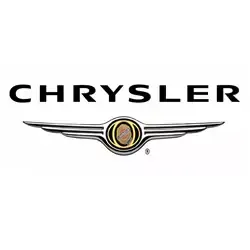Chrysler LHS Tire Pressure
Most common recommended tire pressure for Chrysler LHS is 30 psi based on year of production, trim and OEM tire size, but it maybe different for older models. It is imperative to confirm the exact tire inflation for your Chrysler LHS to ensure safety on the road. Always refer to your vehicle owner's manual for the correct tire pressure designated by vehicle's manufacturer.
Select your Chrysler LHS production year to see its recommended tire inflation.
| Model Year | Front Tires | Rear Tires |
|---|---|---|
| 2001 Chrysler LHS | 30 psi | 30 psi |
| 2000 Chrysler LHS | 30 psi | 30 psi |
| 1999 Chrysler LHS | 30 psi | 30 psi |
| 1997 Chrysler LHS | 30 psi | 30 psi |
Recommended Tire Pressure for Chrysler LHS
Maintaining the recommended tire pressure for a Chrysler LHS is crucial for ensuring the vehicle's optimum performance, safety, and fuel efficiency. Correct tire inflation plays a pivotal role in maximizing the tire's contact with the road, which significantly enhances traction, braking, and cornering stability. This adherence not only contributes to a smoother and more controlled driving experience but also reduces the risk of tire-related accidents caused by underinflation, such as blowouts or tread separations. Moreover, tires inflated to the manufacturer's suggested PSI levels exhibit more uniform wear patterns, thereby extending their lifespan and saving the owner from premature replacements. Furthermore, optimal tire pressure is essential for achieving the vehicle's best possible fuel economy. When tires are underinflated, their rolling resistance increases, meaning the engine must work harder to move the vehicle, leading to higher fuel consumption. For owners of the Chrysler LHS, regularly checking and adjusting tire pressure according to the specifications provided in the owner's manual or on the tire information placard located on the vehicle (often in the driver's side doorjamb or fuel door) is a simple yet effective practice for safeguarding operational efficiency, passenger safety, and managing operational costs.

All listed guides, data and/or calculations are for informational purposes only. TirePressure.com does not warrant or make any representations regarding the accuracy of or the results of the use of this information. Always refer to vehicle owner's manual for the correct tire pressure configuration.